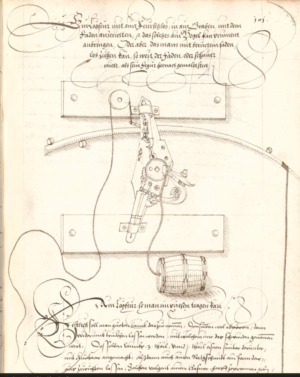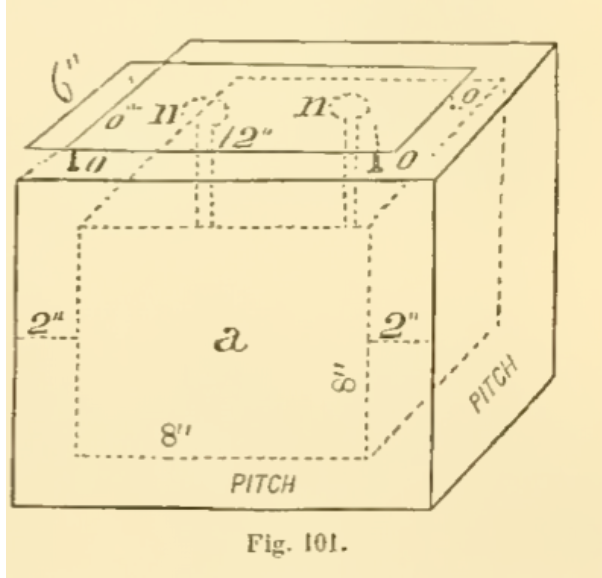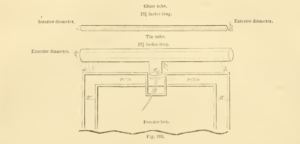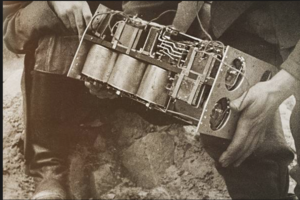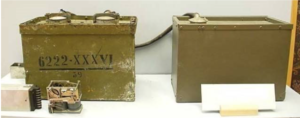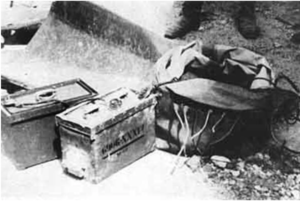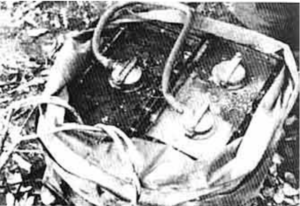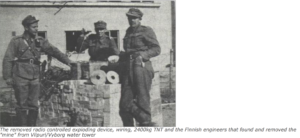Thanks to “JB” for flagging up an interesting report of an ordnance officer dealing with a German IED in East Africa using “hook and Line” techniques during WW1. It’s led me down a fascinating burrow, and ties up a whole series of IED attacks on trains and other targets. It also provides a dreadful familiarity – an IED campaign with direct parallels to modern IED attacks in Iraq and Afghanistan, and it sits in the context of a part of WW1 that I was barely familiar with. Here’s the story followed by the links and its context in IED history.
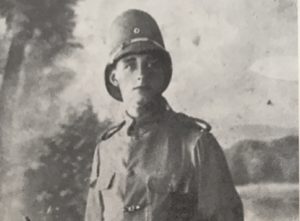
This man is Nis Kock. He was a young sailor in the German Navy. He made literally hundreds and probably thousands of IEDs for the the German East African Campaign in WW1. He is often described as a Danish sailor, but he certainly saw himself as German, although he could speak Danish as well as German. He was already a member of the German Navy in 1914 when he was recruited for special duties. The Germans were putting together a blockade runner, a ship disguised as a Danish freighter to slip through the British blockade in the North Sea and resupply the cruiser Königsberg off the East African coast. As a young adventurous man, he jumped at the chance. His ship, a captured British steamer the “Rubens“, was called the “Kronborg” for the purposes of the mission, loaded with coal, dynamite, field guns and ammunition. It slipped through the blockade in late February 1915, sailed the Atlantic and round to the Indian Ocean coast of East Africa. There the Königsberg was being blocked by British cruisers in the Rufiji delta. At the time there was also a land campaign beginning between the British and the German Forces in East Africa under the command of General Lettow-Vorbeck – a remarkable character. I dont have space to describe this campaign but suffice to say that a few thousand German forces tied up a quarter of million British Empire troops for the duration of the war, who might otherwise have been deployed to the Western Front. It was a nasty, vicious campaign fought in appalling conditions in the jungle and the bush. What is little known, I think, is the key role that IEDs played in restricting British movement in the theatre. Certainly the use of explosive devices or mines is barely mentioned in British history but it is clear they were fundamental to Lettow-Vorbeck’s successful strategy, operations and tactics.
When the Kronborg arrived off the coast of East Africa it raised the suspicions of the British Royal Navy, spotting it as it tried to break through their screening blockade, and chased it into the shallow water of Manza Bay (nowadays in Northern Tanzania). The ship was damaged by naval gunfire, and scuttled with just her superstructure remaining above water while the crew escaped ashore. Importantly the cargo received little damage and the British didn’t realise this. Over subsequent weeks, Nis Kock and his fellow crew members recovered most of the cargo from the semi-submersed Kronborg, and much of this material became Kock’s raw materials for IED manufacture in subsequent months and years.
What happened next is interesting. The Kronberg’s pseudo-Danish crew (actually German) were co-opted into the German East African Force. Nis Kock, clearly a bright individual was made assistant to the “munitions director”. His task was to store the explosives and munitions and prepare them for use. Keen readers of this blog will recall the following earlier posts:
- The use of firearm mechanisms for explosive device initiation.
- How trigger mechanisms were used by the Boers in the Boer War to initiate explosive devices atacking British trains
Now it appears that there were a number of Boers, veterans of the war against the British in South Africa a decade and a half earlier. They clearly remembered the technique of using an upturned trigger mechanism as a switch to initiate the explosives in a device. Kock was instructed to manufacture such devices and he got to work.
Here’s a reminder of the Boer device:
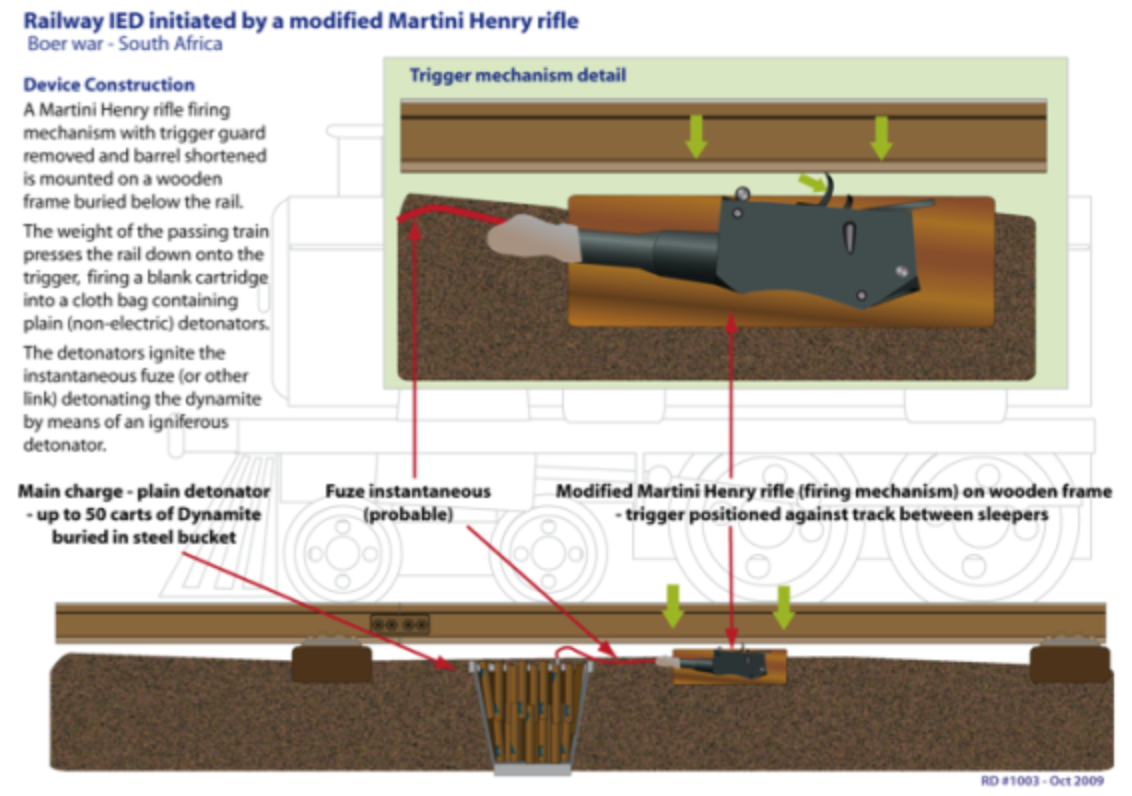
It would appear from Kock’s diaries that he perhaps wasn’t aware of the origins of this concept, but he certainly churned them out as packages for the raiding German insurgency to deploy, probably in their hundreds. It’s clear to me that they were key and central to Lettow-Vorbeck’s plans as Kock received constant requests to produce more. He was operating either from makeshift workshops or “in the field’ and developed, I think, remarkable skills. The impact of the IEDs made by Kock was considerable, for example in the summer of 1915, Lettow Vorbeck turned his attention to the Ugandan railway – which ran through what is now Kenya and was a key logistical route for the British. The German insurgency (and that’s what it absolutely was) had considerable success with their IEDs. For example in one short period between March and May 1915, the German insurgents using IEDs blew up 32 British trains, nine bridges and a dam. I believe that these could have all been devices made by Nis Kock.
Kock himself occasionally laid his improvised mines. His experience indicated to him that setting the device was somewhat tricky with the bomb-layer having to reach into the buried device to release the safety catch on the device once it was in position and he describes in his diaries that as a consequence he developed a new design that made the process safer and easier. Regrettably there are no details of this design change.
Kock used a variety of components – usually the initiation switches were the trigger mechanisms from damaged firearms, used either as booby traps or as pull switches for demolitions. I suspect there was a shortage of “detonators/blasting caps” and there were no batteries to use electrical initiation methods so this got around that problem with the damaged firearm firing a bullet into a main charge of dynamite or an adapted shell fuze. But I am guessing a little here, as Kock deliberately is a little vague on detail in his notes. The main charge was either dynamite recovered from the Kronborg, ammunition intended for the Königsberg in terms of naval gun shells or captured munitions. The devices were used against trains but also as demolition charges and to emplace on tracks used by the British in the bush, placing a wooden board on top of the trigger and lightly covering the board with sand and earth. Here’s a translated excerpt from his diaries:
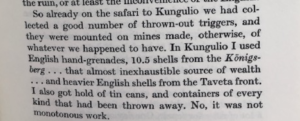
As I researched the context of this insurgency and its use of IEDs I was struck often by the similarity between the activity of Lettow-Vorbeck’s guerrilla groups and more recent insurgent IED campaigns in Iraq and Afghanistan. Von Lettow-Vorbeck’s remarkable campaign is worthy of closer study in that context.
Most of all, I am intrigued of a very weird parallel. At the exact time that Kock was enabling Von Lettow-Korbeck’s campaign against the British in East Africa, exploding devices under trains on the Uganda railway initiated with rifle triggers, an idea from the Boer War, then an identical campaign was being waged in Arabia. Here, Lawrence of Arabia’s insurgent campaign against the Ottoman Turks and the Hejaz railway, was being enabled by Garland’s trigger-initiated IEDs, inspired too by the Boer war experience. See here and here. Same device, same war, different campaigns, different sides.
In terms of an EOD response, there appears to be very little detail. Here’s the diary event which was sent to me which started off this pot. In his War Diary, Major Guy Routh reports, “having to dissect these German contraptions for blowing up our train engines and although they learnt to put two trucks of stones in front of the engines, the enemy countered that with delay fuzes. It was no fun pulling a wire from behind a wall in case the bombs go off, nor was it a job that could be delegated”. It should be noticed also that there was a little technological battle ongoing between the IED design and the countermeasures designed to defeat it – again this translates directly to much more recent experience in recent wars. However new we feel these modern IED threats are, they have almost always been seen before, it’s just that history is always forgotten.
Update: Some more detail of the attacks:
Here’s two photos showing that bridges were blown up:
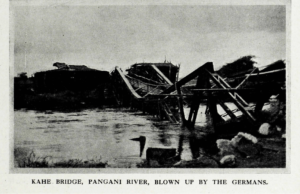
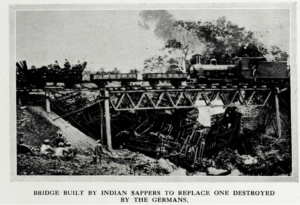
I have also found a report that the Germans (probably Kock) made improvised command-detonated sea mines for use at the coast, however none functioned as intended. For attacks on tracks against foot patrols and vehicles, it appears that as well as the wooden board method, the trigger mechanisms were adapted to function by trip wire.
My friend Ian Mills, who has investigated the Boer use of these devices in the earlier Boer conflict reminded me that the British used the counter-IED method of pushing two sand or rock loaded carriages ahead of the train as sacrificial elements against Boer IEDs, so the British re-used this technique here. The Germans claim to have developed a mechanism that would “count” the number of wheels that passed over, so circumventing this counter-measure. Regrettably I have no detail of this.
It also appears that the most effective IEDs were actually made from British demolition charges, captured by the Germans at Tanga.

